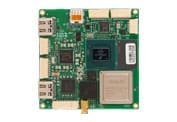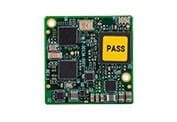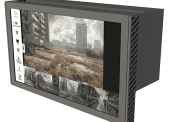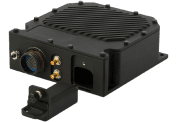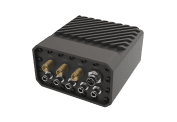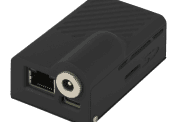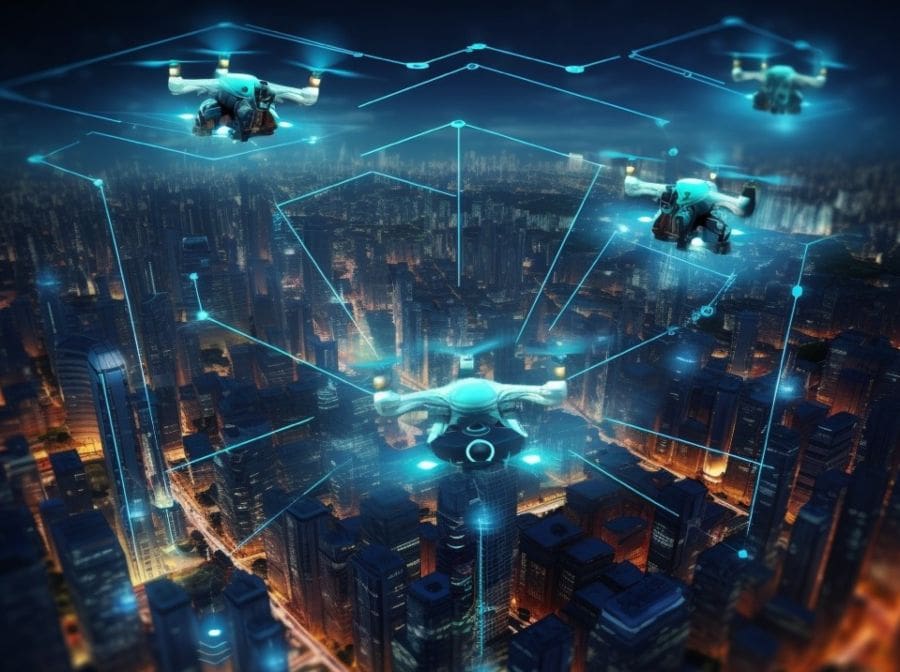Unmanned Aircraft Systems (UAS), commonly referred to as drones, have evolved into sophisticated tools that benefit a variety of industries. However, their increasing prevalence in urban environments presents several security and privacy concerns. As a result, the development and deployment of Counter-Unmanned Aircraft Systems (cUAS) technologies have become vital. These systems can detect, identify, and neutralize rogue drones. But, deploying them in the urban environment is challenging due to several factors.
Challenges in Deploying cUAS in Urban Environments
124n Coordination: This refers to the coordination with various entities like air traffic control, law enforcement, local governments, and stakeholders. Drones can fly at low altitudes and in areas where manned aircraft cannot. In urban environments, the airspace is crowded with helicopters, planes, and other legitimate drones. Ensuring that countermeasures don’t interfere with normal air traffic and are not activated against legitimate drone operations requires precise coordination.
Finding Acceptable Locations: Urban environments are densely populated with many infrastructures, such as tall buildings, power lines, and underground utilities. To effectively deploy cUAS technologies, they must be placed at strategic locations that offer the broadest possible coverage area. However, these ideal spots might be occupied or inaccessible due to existing infrastructures.
Installation Permissions: Even if a suitable location is identified, obtaining permission from landowners or local governments can be cumbersome. There might be zoning restrictions, concerns from residents, or other bureaucratic hurdles.
Challenging Physical Environment: Urban landscapes are full of structures that can cause radio frequency (RF) interference, such as metal structures, electronic billboards, and even some building materials. In addition, lots of noise, motion, color, and heat variations, as well as objects causing Line of Sight (LOS) blockage, can impact the ability of cUAS systems to detect or track drones effectively.
Regulatory Landscape: Regulations surrounding drone and C-UAS operations can be fragmented, especially in a global context. In some regions, the laws might be more stringent, making it challenging to deploy specific countermeasures, while in others, the rules might be lax, leading to a surge in rogue drone activities.
These challenges underline the need for a multifaceted approach to cUAS deployment in urban settings. Balancing security, regulatory compliance, and public trust is paramount to the successful integration of these technologies into the urban fabric.

Possible Mitigation Technologies
RF Mitigation: One of the most common methods of drone detection and interference is through RF. Drones often communicate with their operators via RF signals. By detecting and tracking these signals, one can locate both the drone and the operator. Furthermore, jamming these signals can disrupt the drone’s operation, causing it to land or return to its point of origin. However, RF mitigation in urban environments must be carefully managed to avoid interference with other crucial communications.
Kinetic: This method involves physically intercepting and neutralizing the rogue drone. It can be done through net-carrying drones, which capture the rogue drone and safely transport it to the ground. Another method involves using projectiles to physically disable the drone. However, in urban environments, there’s a risk of collateral damage, especially if the rogue drone or the countermeasure falls into populated areas.
Directed Energy: Technologies such as high-powered lasers or electromagnetic pulses can be employed against drones. When aimed precisely, a laser can heat a component of the drone (like its battery or motors), causing it to malfunction. Electromagnetic pulses, on the other hand, can fry the drone’s electronics, rendering it inoperable. The advantage of directed energy is that it’s often faster than other methods. However, in an urban setting, there are concerns about unintentionally affecting nearby electronics or blinding risks associated with lasers.
Aerial Attacks: Kamikaze drones can be used as cUAS measures. However, this method is not widely adopted due to concerns that fast-moving drones could collide with an unintended object, resulting in multiple falling objects.
AI and Machine Learning: AI and ML are increasingly being used in cUAS solutions. These technologies allow systems to learn from past experiences and improve their threat detection and neutralization capabilities over time. For instance, they can use pattern recognition algorithms to identify drones based on their flight patterns.
Edge AI Computing: Edge AI processing allows cUAS systems to analyze data on-site rather than transmitting it to a central server. This approach drastically reduces the time taken to process and act upon data, making the response to rogue drones swift and efficient. By processing data on the edge near the detection equipment, the cUAS system can instantaneously decide on the best countermeasure based on the threat level, type of drone, and other environmental variables.
Ultra-Low Latency Video Streaming: Video streaming is crucial, especially in kinetic and directed energy mitigation methods. Real-time visual data allows operators to track and neutralize threats with incredible precision. It reduces the chances of collateral damage in urban settings and ensures that the countermeasure is deployed effectively. When combined with Edge AI, real-time video data can be analyzed instantaneously for threat assessment, ensuring immediate and appropriate response.
The Future of Urban Drone Security: Bridging Challenges with Innovation
The rise of drones in urban environments brings with it a set of complex challenges. While they offer numerous benefits, the risks they present can’t be overlooked. cUAS technologies are essential in ensuring the safety and security of urban areas. However, deploying them requires overcoming significant challenges, from coordinating with various entities to the actual physics of the urban environment.
Incorporating cutting-edge technologies like RF mitigation, Edge AI computing, ultra-low latency video streaming, and others can drastically enhance the effectiveness of cUAS systems, allowing for real-time threat assessment and mitigation. Collaborative efforts between governments, industry players, and the public will be essential in creating a balanced environment where drones can coexist harmoniously with urban landscapes and their inhabitants.

